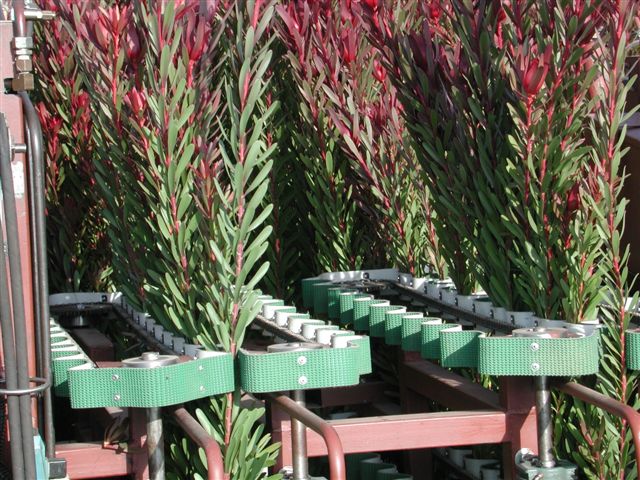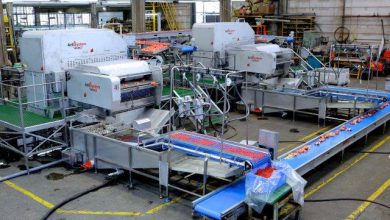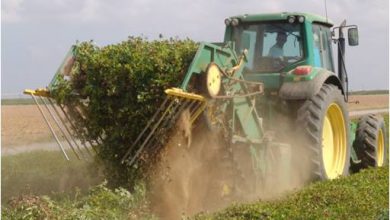A Mechanical Harvester for Leucadendron Flowers
The self-propelled harvester has better height control, slope balancing capabilities and maneuverability
Dr. Boaz Zion


Leucadendron flowers are rapidly becoming the most popular filler for flower bouquets, thanks to a number of the flower’s unique qualities: the height – some flowers reach a height of 2 meters or more – and the variety of floral shades, including red, green, yellow and even a combination of several shades of color on the same branch; as well as the fact that the cut flowers last for unusually lengthy periods of time.
Leucadendron is a flower which is usually used as a ‘filler’ for flower bouquets. It belongs to the Proteaceae family and is grown in rows (approximately 2 meters apart) as ‘flowering orchards’. A flowering plant normally yields dozens of flowers (‘branches’) of various heights which require cold temperatures to develop their special colour desired in the markets. The branches are usually manually and selectively harvested according to their quality and market demand. At a certain stage of the season, when the orchard bears a high percentage of fully mature branches and the market demand is high, efficient harvesting and high throughput are required. With the constant decrease in availability of farm workers in Israel, a mechanical harvester for Leucadendron branches was considered, developed and tested under commercial conditions.
Two types of mechanical harvesters for leucadendron cut flowers were developed: tractor-mounted, and self-propelled versions. In both, a conveyor belt assembly comprised of two pairs (upper and lower) of conversely rotating conveyor belts is used to hold the flowers before they are cut from their plants and conveyed away from the cutting front line. The conveyor belts comprise undulating an outer layer made of a soft and flexible material, mounted on 3/8 inch chains. The peaks of the ridges of one conveyor interlace with the valleys of its counterpart, to form an adjustable undulating, narrow and flexible gap between them. This structure enables single stems of various thicknesses or multiple stems to be held together without damaging the flowers. The conveyor belts may be adjusted to predetermined heights above the cutter, in order to grip and support the flowers at the stem rather than the head. In order to engage and hold the flowers before they are cut from the plants, the front ends of the conveyors project ahead of the cutting line.
The self-propelled harvester has better height control, slope balancing capabilities and maneuverability. It is operated by three workers and can harvest approximately 0.3 hectare in an 8-hour working day. The more export-quality flowers produced by each plant in the field, and the greater their proportion of the total number, the more effective and economically viable is the harvester.
A patent application has been submitted.

Fig. 1: A top view of the self-propelled flowers harvester.
Author: Dr. Boaz Zion, The Institute of Agricultural Engineering, Agricultural Research Organization, The Volcani Center, P.O. Box 6, Bet Dagan, 50250, ISRAEL.
E-mail: boazz@volcani.agri.gov.il
Published in ISRAEL AGRICULTURE, 2007




